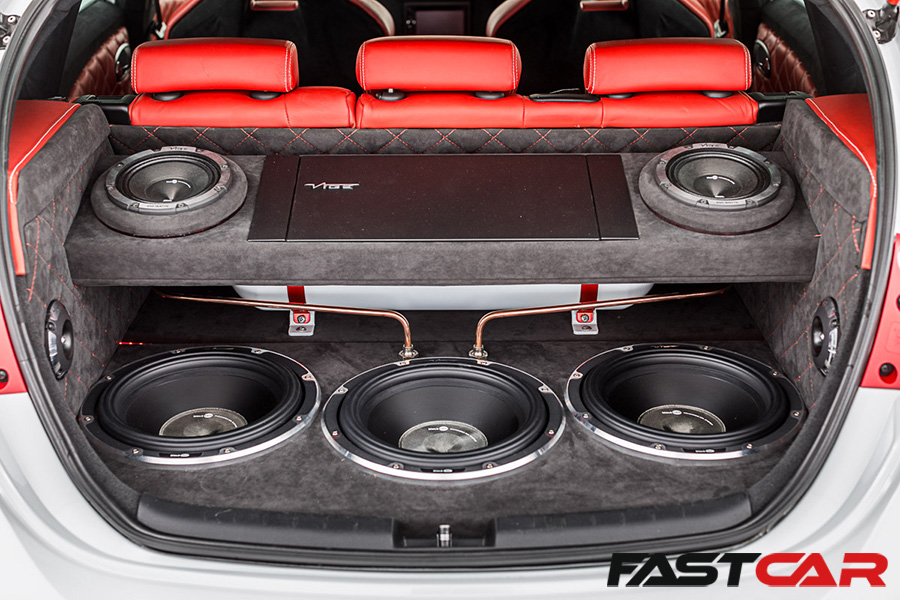Car audio matters! The right motoring tune takes your love of music and multiplies it by your driving pleasure. This guide explains how each area of car audio works and why people upgrade them.
The days of a car radio shop on every high street are long gone. What establishments we have, are all the cream of the business, as only the best survived. You can still book an installation at a fitting bay. You can book an expert fitter to come to you, too. There’s even some stuff like car speakers you can fit yourself, given a modicum of skill.
But where to start? Audio can get tweaky really fast and car audio even more so. You need to keep in mind what you want to achieve. We can help you get a grip of what is what and where to start, with this beginners’ guide to car audio.
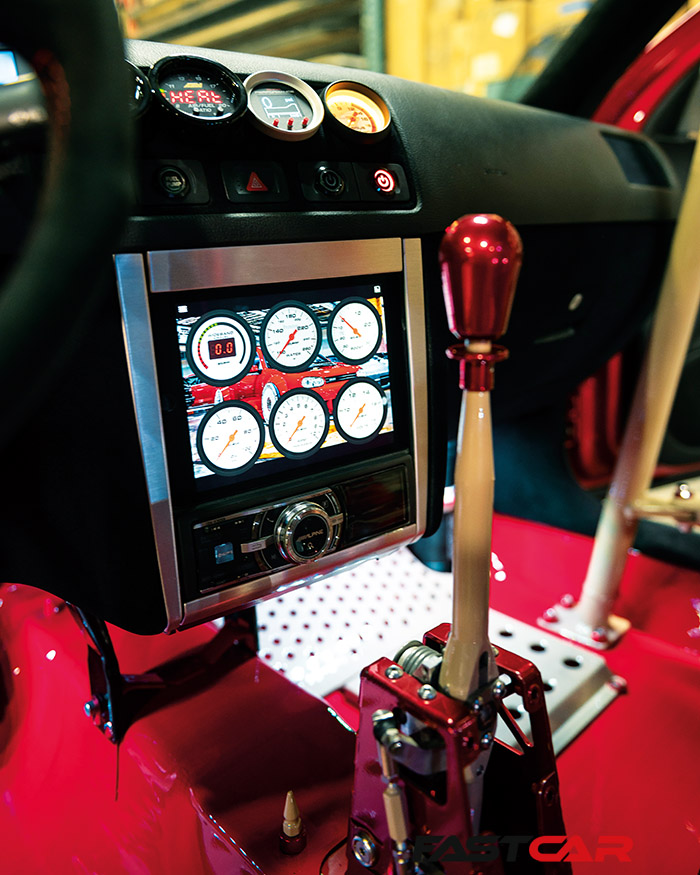
Head Units or OEM Integrators
This is the Great Divide in our world. Age-dependent, your car will have a standard ‘DIN’-size radio or else one that’s an integral part of the dashboard. The DIN standards were about wiring loom sockets and dimensions of car radios. Radios come in single-DIN or double and the bigger ones can house big sexy touch screens. There were once shops lined with dozens and dozens of head units. It was dazzling. Manufacturers used to compete with each other based on how cool their displays were. The awesome OLED screens seen in massive TV sets today were developed for the head unit market. For a while, they ALL had to feature dolphins and JVC even had one you could upload your own image to. You took a .jpeg and made it the display. I was very childish with my test one, I recall.
If you have a vehicle with a ‘DIN-slot’ dash-hole, there is a wider than ever choice in digital technologies. Clever buyers will get a head unit that is just a bit more smart than they think they will use. For this can be a slippery slope once you get to experience ever yet more impressive results.
The big choices are about the inclusion or lack of the newest whole families of car audio tech. These are called Apple Car Play and Android Auto. They are the road-going interfaces for the iPhone or Android telephone worlds. They create low-distraction displays for navigation and music apps as well as connecting your phone.
An ‘integrator’ is for cars with radios you cannot change. They allow you to upgrade by getting the music signal out of your built-in radio, to send off to what ever system you wish. No aux-out? No problem. Some can even feed graphics into your dash display.
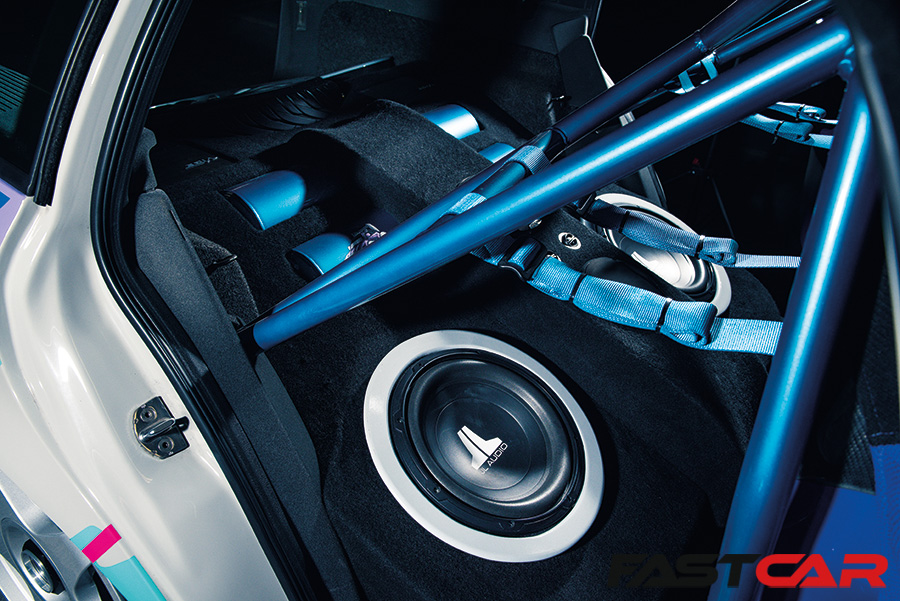
Car Speakers
Speakers are the part people get most excited about, these turn the watts into music. Watts is a unit that musical muscle is always measured by, from car audio, via hifi, to a rock concert. That has to be because you can see them moving before the grilles go on and when doing an upgrade, you can hear instant improvement. Usually, bragged about in terms how many they have in their car, the truth is, more is not always better. In the very latest fanciest systems that you can buy with new cars, the speaker count has gone mad. Lots of little speakers all dotted around so that all passengers get the best audio.
Stuff, ‘em! Make this about you and the front passenger, at best.
Car speakers come in standard sizes. The little ones for the very high frequencies are called tweeters. Usually up to a maximum of 25mm (an inch) across. The next sizes up play the middle frequencies – where vocals live – and are called midranges. Above six inches, the edges between their jobs blurs, as some of them can make lumps of bass, too.
Every car has places built into its monocoque, in the doors and often pillars, to house speakers. The grilles over these speakers will reveal if yours are components or ‘full-range’ units. If you have component speakers, you will have a collection of grilles, for tweeters, mids and more.
You need to tell your specialist what car you have and they will know what speakers you can upgrade to. These start with extra-efficient instant drop-in replacements that make way more sound from what you already have, like magic. Then you are looking at better speaker products and possibly custom door improvements as well as adding some proper power.
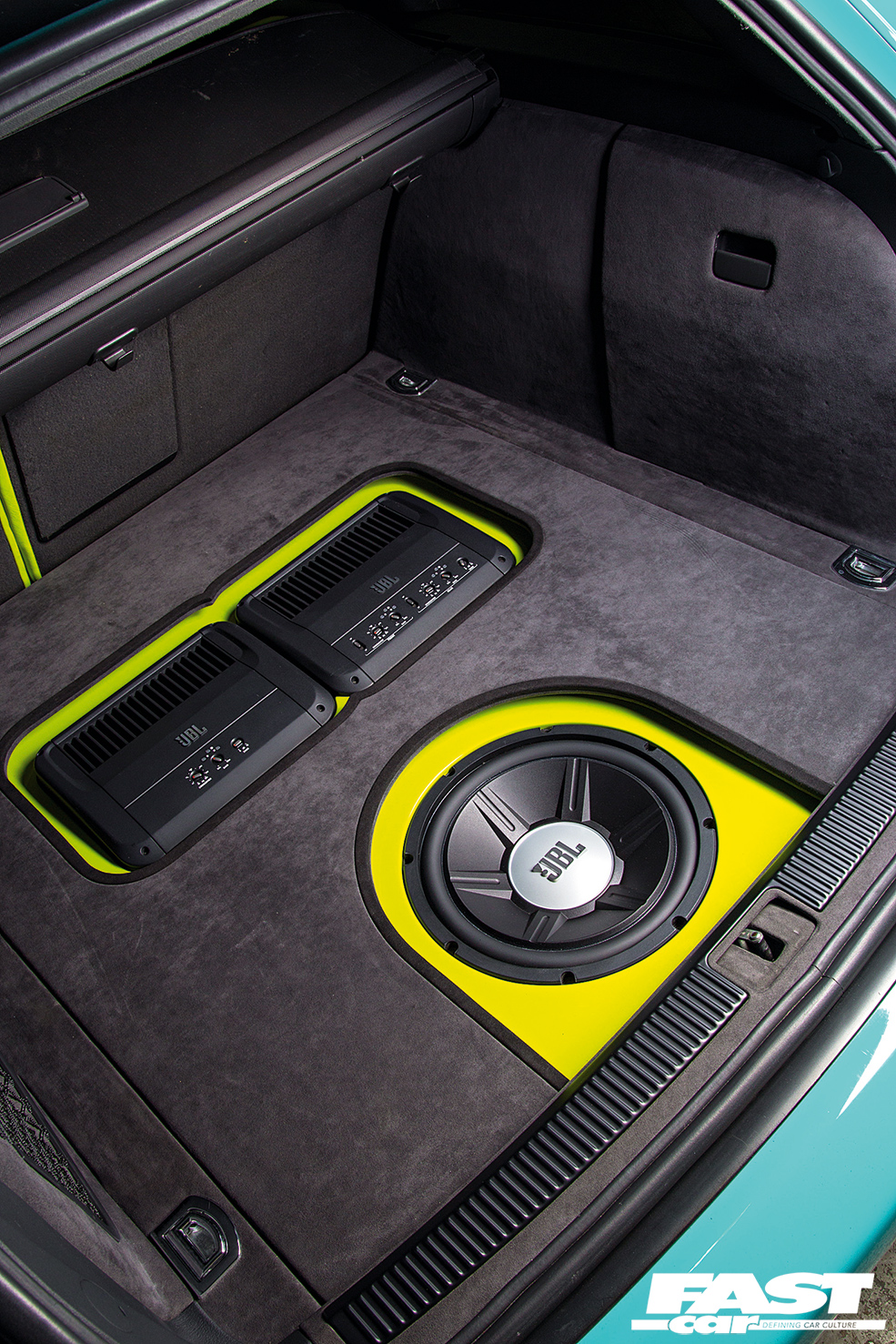
Car Audio Subwoofers
Subwoofers are for making the bass tones in your system and they will need an amplifier to run. Like engines, from moped to muscle car, woofers start little (technically, 8in is the start) and finish at huge. My friend has two 33in ones he’s just fitted to his home theatre. He is a leading lunatic in huge booming car audio bass systems.
But the image of car bass is kind of overshadowed by these crazed extremes. Like judging all of motoring only by looking at dragsters. The biggest selling subwoofers are the ones you can hide under a seat. Or the ones made to fit to the vehicle’s boot, so as not to eat space nor add much weight.
Here is an absolutely bonkers thing about subwoofers. It’s called the ‘subwoofer effect’. The music seems clearer and better because of the sub taking over the energy-sapping bass-end duties from the other speakers. This means they sing with an effortlessness that you can hear. It works even at low volumes.
Subwoofers don’t just make it louder, they can genuinely improve sound quality, which amazes some folks. They vary by efficiency and power. You can spend on a basic add-in product from a ready-made range or you can go custom. This opens up a whole world of bass hunger! The subwoofer itself, the kind of box it goes in, as they hit differently, and the results wanted.
It can be a small eight inch, a ten inch or a twelve. You can still get fifteen inch car subwoofers and as seen above, pure loony ones. This boils down to the three things, of model of car, your taste and budget.
Check our guide to subwoofers for more advice.
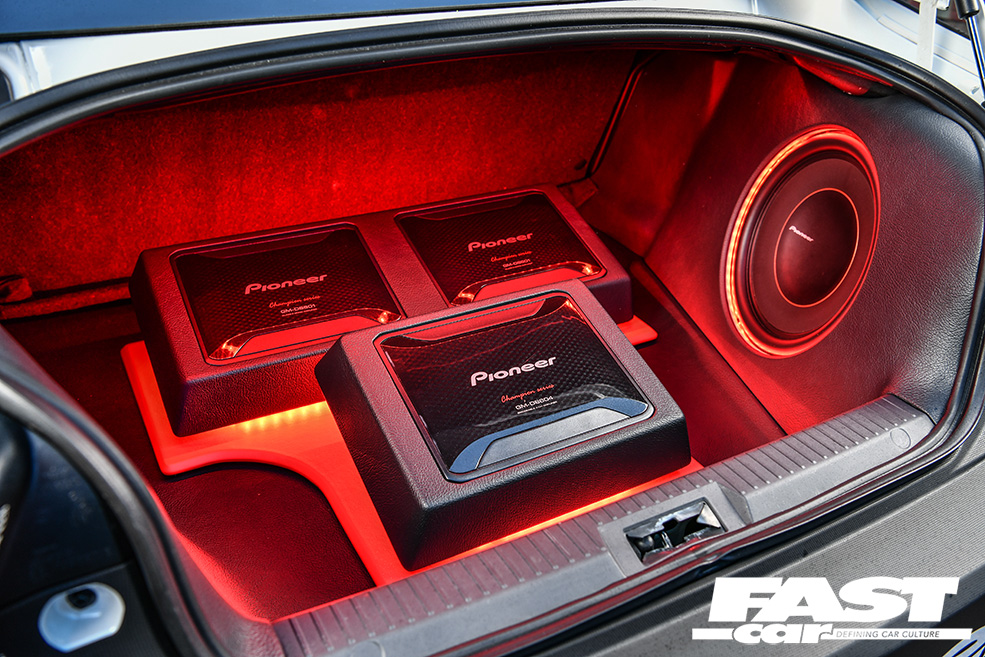
Car Audio Crossovers
The speakers that are only for high frequencies (your tweeters) can only cope with a few watts of power. Likewise, your subwoofer needs some grunt to make it go and will not play the tweety tones. Your mids need just mid-band tones. If you put bass power into the speaker wire of a tweeter, you will burn it out. You have to split the frequencies up to go to the right speakers.
This is done in two ways, called active and passive and here it can get more technical. The thing to keep in mind is that speakers all need watts from an amplifier. This might be in the head unit (manufacturers always brag about head units’ internal wattages) or a separate amp. It is all about channels.
A passive crossover is a little box of lumpy-looking electrical bits. These are coiled up wire ‘chokes’, big capacitors and resistors marked in Ohms, often housed in fancy clear-topped housings. Just connect the head unit’s speaker output to the crossover’s input screw-downs and wire the component speakers to the outputs. The passive takes the watts in and uses the bits inside, to filter the frequencies to the right speakers. You do not connect any 12V power, it just uses the juice in the speaker wires.
An active crossover is about sophisticated audio systems. This is a powered device that splits up the music to use a separate amplifier channel for each speaker. You can find them on amplifiers as a feature, or else as a separate product for car installation. There are also fully digital crossovers within the software set-ups in the heart of the most serious head units.
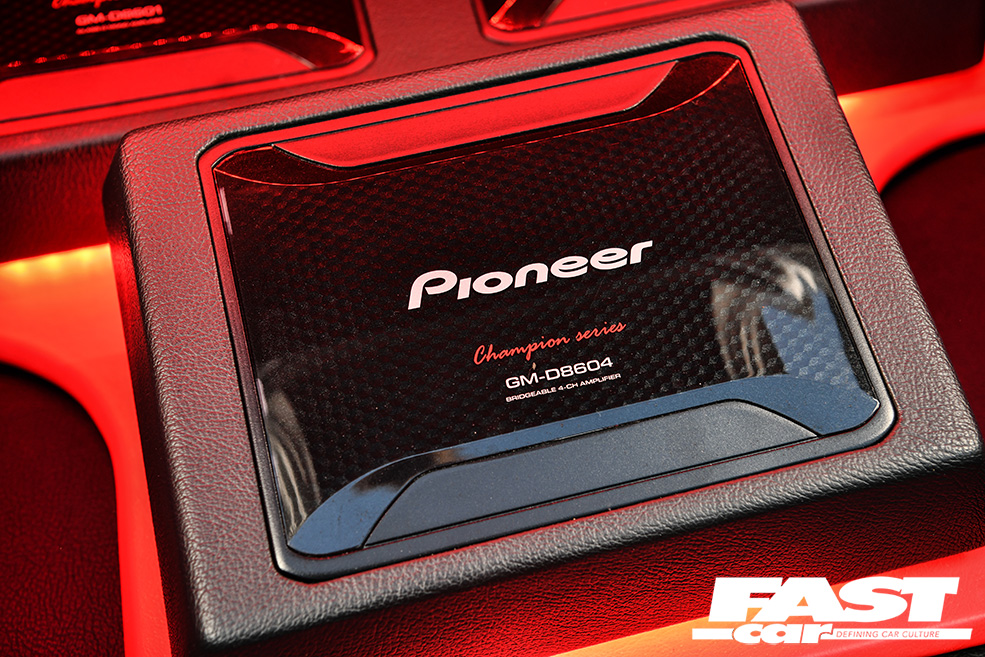
Car Audio Amplifiers/Wiring
Amplifiers turn the little musical signal from inside your head unit into watts. They come in two types; ‘chip amps’ and proper transistor amps in metal casings. That said, there were once some car audio amplifiers with tubes – like light bulbs! The chip amp is limited to around 23W RMS or ‘Root Mean Square’ or 40w ‘peak’ output. It can thus be a nightmare to work out true wattages, of which more in a moment.
There are so many different things going on, that mere power alone will not guarantee great quality. But a few watts helps. Adding an amplifier is a big step as it means making calculations about your car’s electrical system. You cannot just plop a huge amp in your boot. Even a small amp needs proper wiring and a fuse. It will also need a signal feed, that looks like a hifi one. Called an RCA lead, the plug system was named by an ancient audio company. These cables are never cheap if you get ones that are any good. You need to budget for this stuff when thinking about any amplifier.
The thing about fibs in amplifier ‘ratings’ was a problem, that got worse the cheaper you went. In the USA they actually created a standard that exists to this day. CEA Compliant is the label to look for. Otherwise, check the Root Mean Square wattage rating.
The key with amplifiers is the application. Many are multiple channel, bristling with features like crossovers and some are about fidelity above all else. These last can be eye wateringly expensive and deeply beautiful. Picking the right one for your taste, budget and desires is the key.
Check our guide to amplifiers for more advice.
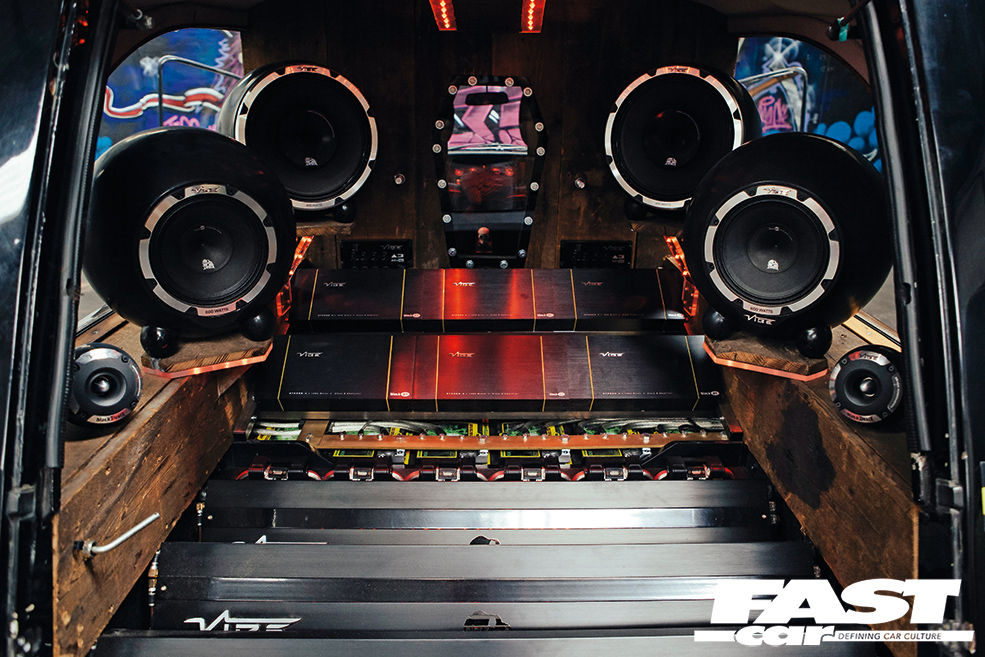
Sound Deadening
The best value for money upgrade is to improve the speaker enclosure you are sat inside – the car itself. Simply put, if you add some sound deadening to the inside of your doors, sound quality increases. Because all the watt-energy that was going towards making vibrations in your car has been silenced. The energy is used converting the vibrations to micro-heat in the fabric of the (usually Bituminous) deadening sheet. All you hear is the music. Before, it includes stuff you are not really aware of but afterwards you have tighter bass, better clarity and definition.
The best demonstration of this effect was a pair of Paiste cymbals hanging in a frame at car shows. Every now and again, you would hear the “crrraaasshh!” sound of someone hitting one. Where ever you were in the show, you could hear it. When you got up to their exhibit, you found there was another noise, as well. That was the second cymbal being hit but only making a quiet thud.
The reveal was what you saw on the back of them. The first one was clean. The second had four little strips of sound deadening mat on the back, destroying its ability to resonate. Your car resonates too, with pretty much all the bodywork! That is why cars do have some sound deadening built-in from the factory.
You are more emotionally affected by the acoustic environment than you realize. Churches’ reverb and acoustics make you feel hushed and reverent. The moment you shut the door as you get into a Rolls or Bentley, you experience ‘splendid isolation’. Meaning you are insulated from the outside world and it feels posh, even without the radio on.
For more ways to elevate your cabin music experience, check out our guide to the best car audio accessories.

